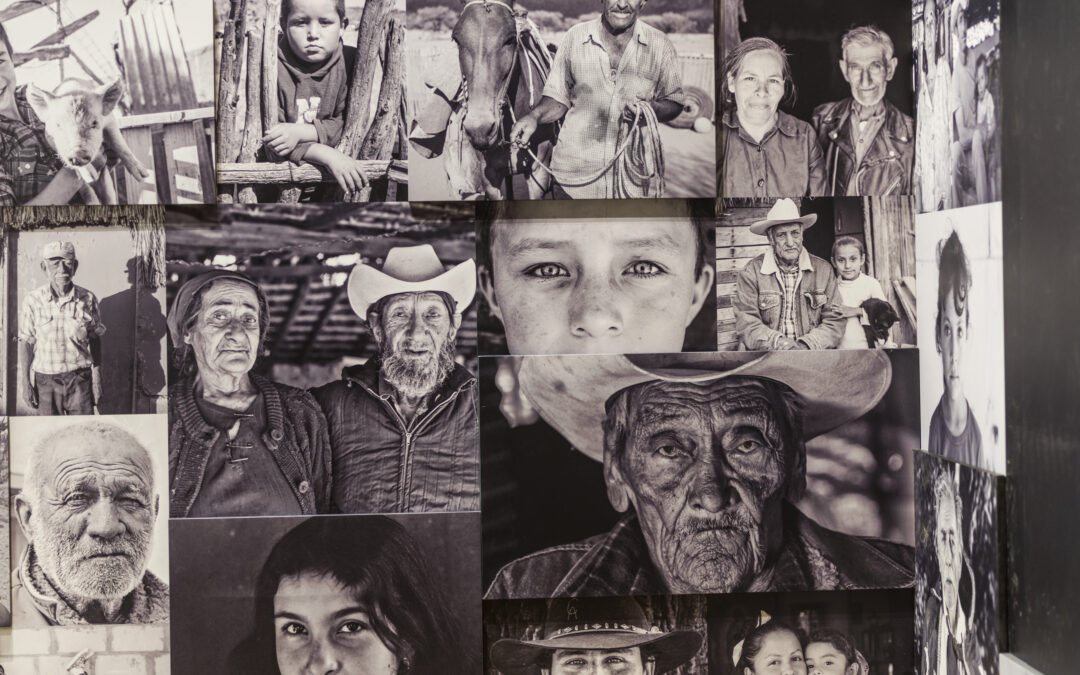
Sustainable Ranching and the Cowboy Museum in El Triunfo
Sustainable Ranching and the Cowboy Museum in El Triunfo
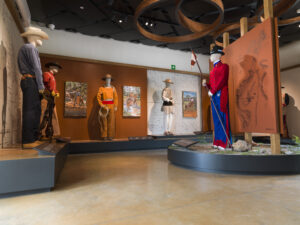 The new Museo de Vaqueros del las Californias in El Triunfo – The Cowboy Museum – is an intimate, yet gorgeously expansive look at the 300 years of families, traditions, skills and tools that bind the Californias of Mexico and the United States in ways that no war or border can erase. It is a celebration of the great vaquero / cowboy culture that was born in Baja California, moved north with the cattle to Alta California, and still thrives today throughout the western United States.
The new Museo de Vaqueros del las Californias in El Triunfo – The Cowboy Museum – is an intimate, yet gorgeously expansive look at the 300 years of families, traditions, skills and tools that bind the Californias of Mexico and the United States in ways that no war or border can erase. It is a celebration of the great vaquero / cowboy culture that was born in Baja California, moved north with the cattle to Alta California, and still thrives today throughout the western United States.
The museum exhibits are punctuated with the fantastically beautiful paintings of La Paz artist Carlos César Diaz Castro, who created ten paintings and two murals to help tell the vaquero’s story, as well as stunning photos of present-day vaquero life by renowned Baja California Sur photographer Miguel Angel de la Cueva. As with its sister museum in El Triunfo, Museo Ruta de la Plata / the Silver Route Museum, one of the museum’s most compelling exhibits is the oral history section, in which members of local ranching families share their stories, histories and anecdotes.
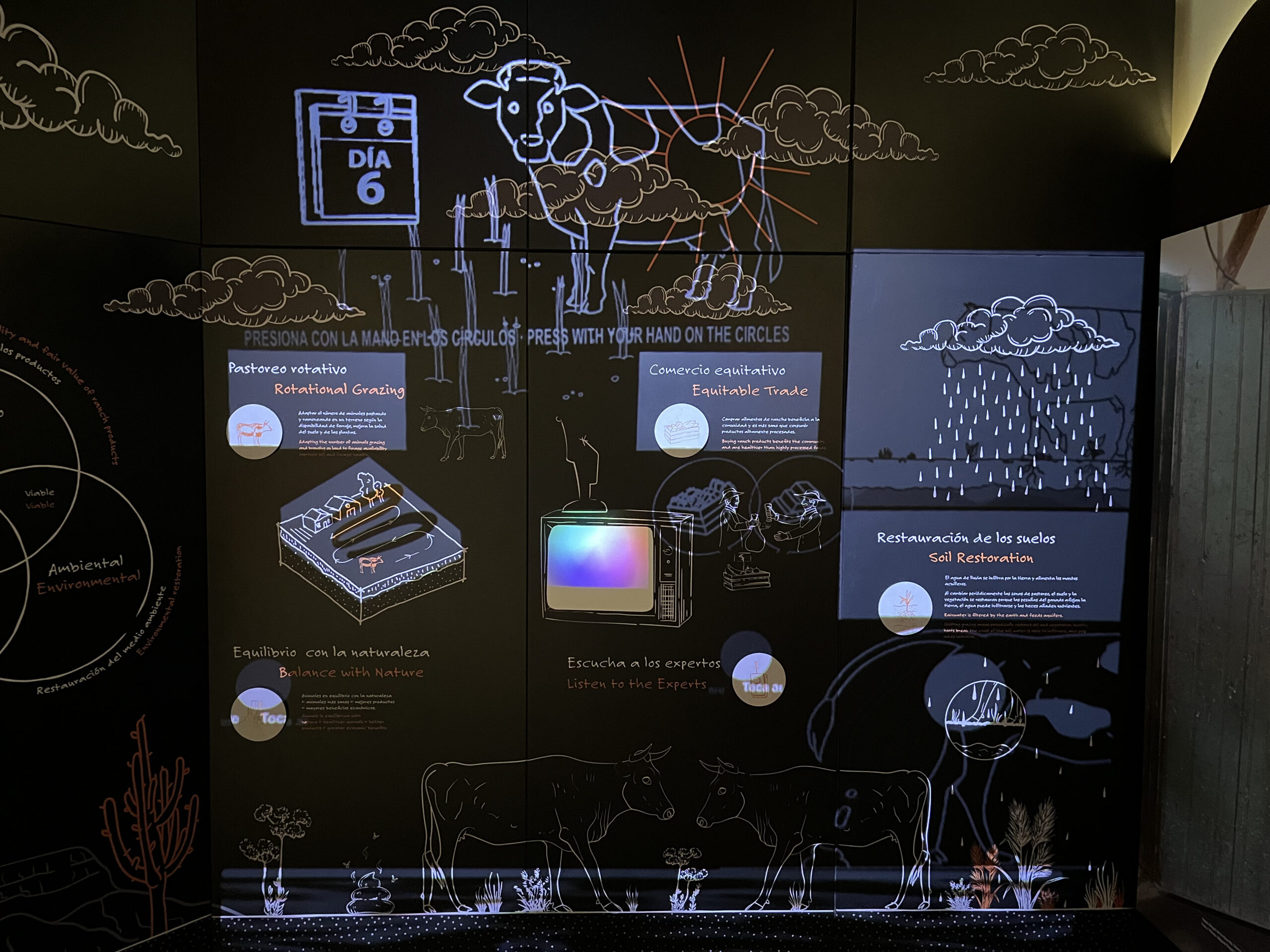 But perhaps one of the most interesting themes running throughout the museum in small plaques and chalk drawing prints is that of sustainability. Interwoven with exhibits of criollo pigs and cattle brought from the Iberian Peninsula, is the explanation of Transhumance, livestock practices with minimal environmental impact that the Spanish brought with them to the New World that involved the environmentally sustainable practice of seasonal livestock migration. This practice is now a cornerstone of regenerative cattle ranching, and you don’t have to go far from the museum to see it in action. Christy Walton’s innovacionesAlumbra, an alliance of sustainable businesses in Baja California Sur, is the owner not only of the Cowboy Museum, but also of Rancho Cacachilas – about an hour’s drive from the Cowboy Museum – where modern day cowboys are fast at work restoring the land.
But perhaps one of the most interesting themes running throughout the museum in small plaques and chalk drawing prints is that of sustainability. Interwoven with exhibits of criollo pigs and cattle brought from the Iberian Peninsula, is the explanation of Transhumance, livestock practices with minimal environmental impact that the Spanish brought with them to the New World that involved the environmentally sustainable practice of seasonal livestock migration. This practice is now a cornerstone of regenerative cattle ranching, and you don’t have to go far from the museum to see it in action. Christy Walton’s innovacionesAlumbra, an alliance of sustainable businesses in Baja California Sur, is the owner not only of the Cowboy Museum, but also of Rancho Cacachilas – about an hour’s drive from the Cowboy Museum – where modern day cowboys are fast at work restoring the land.
Florent Gomis, a Frenchman who came to Baja to study the Ecology of Desert Climates, is the Director of Sustainability at Rancho Cacachilas, and Transhumance is at the heart of his efforts. “In Baja California Sur as elsewhere in the ranching world, livestock has been blamed for the destruction of the land. In reality, the cattle aren’t the problem, it’s the management of the cattle.” Florent explains further. “Before there were vaqueros, herds of herbivores were motivated by predators to keep moving from place to place and that movement kept the land from being overgrazed. What we are working to achieve here at Rancho Cacachilas is the restoration of the impact that wild herds of herbivores once had on the land. These wild herds would continually move location, giving lands time to recover from their impact before their return. Here at Rancho Cacachilas we manage animals in groups and keep them moving, letting the land they had previously occupied rest for at least a year.”
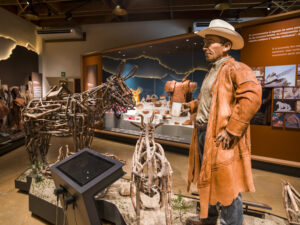 While cattle are typically decried as destructive, Florent sees them as part of a restorative, creative process. “We really view the cattle as gardeners. When they move to a new grazing area, their hooves break the hard-packed dirt, allowing water and minerals to infiltrate the land. The cattle’s dung and urine are full soil-revitalizing carbon and nutrients, and as the cattle graze they trample these riches into the ground, resulting in the regeneration of the land. In a relatively short period of time we have seen these eroded, barren lands become covered in vegetation.”
While cattle are typically decried as destructive, Florent sees them as part of a restorative, creative process. “We really view the cattle as gardeners. When they move to a new grazing area, their hooves break the hard-packed dirt, allowing water and minerals to infiltrate the land. The cattle’s dung and urine are full soil-revitalizing carbon and nutrients, and as the cattle graze they trample these riches into the ground, resulting in the regeneration of the land. In a relatively short period of time we have seen these eroded, barren lands become covered in vegetation.”
The benefits of Transhumance don’t stop there. “One of the really cool things about this process of regenerating the soil is that it also regenerates the rain cycle” explains Florent. “Lots of vegetation on the land has a cooling effect on the atmosphere, causing clouds to precipitate on the land. So from what was once this vast cycle of death – overgrazing, monoculture, fertilizers and pesticides – you get this great cycle of life. The cows create nutritious soil so chemicals are not needed, the soil retains water and supports vegetation, the vegetation improves the soil, attracts more rain and feeds the cows, and the rain replenishes the whole, holistic system.” Florent notes that at Rancho Cacachilas, the same amount of land that could previously support only one cow, will soon support four. Moreover, with the increased vegetation for the cattle to eat, the ranch’s need for nutritional supplements for the cattle has dropped dramatically, resulting in substantial savings.
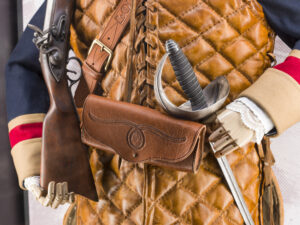 Rancho Cacachilas aims to be its own kind of Cowboy Museum. They’ve taken the lessons from the past, applied them to the present, and plan to share what they’re learning about managing cattle in the specific conditions of Baja California Sur with ranchers throughout the peninsula. The past comes alive at the beautiful new Cowboy Museum in El Triunfo. The past is alive down the road at Rancho Cacachilas.
Rancho Cacachilas aims to be its own kind of Cowboy Museum. They’ve taken the lessons from the past, applied them to the present, and plan to share what they’re learning about managing cattle in the specific conditions of Baja California Sur with ranchers throughout the peninsula. The past comes alive at the beautiful new Cowboy Museum in El Triunfo. The past is alive down the road at Rancho Cacachilas.
